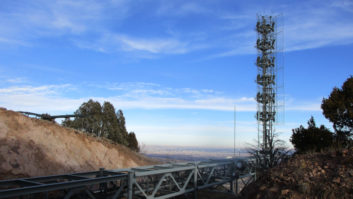More on Ferrites
Dec 1, 2011 1:40 AM, By Doug Irwin, CPBE DRB AMD
Picking up where we left off last month – how to use ferrites to solve RFI problems, such as those caused by an AM or FM transmitter close to a neighborhood or even businesses – let’s look at some practical solutions.
I’ll mention ferrite beads first mainly because I think this is the least likely thing you would end up using. Beads of course slip over individual wires, and their use would in almost every case involve unsoldering a wire, slipping a bead over it, and then re-soldering. I doubt your neighbors are going to be very keen on the idea of you opening up their electronics and modifying it, so let’s move on.
More likely you’ll end up using toroids or split beads, or some sort of in-line filter. Toroids offer perhaps the most practical solution to many cases. The offending cable is literally run right through the toroid, and if possible, wrapped around it. This can be any cable that fits: audio, coax, CAT-5 cables. Remember the idea here is to mitigate common-mode noise (RF) that is basically the same on all the conductors. In the case of shielded cable (or coax) the idea is to suppress RF from flowing on the shield itself. There are at least two good sources of toroids for this purpose: One is Palomar Engineers. Another is Fair-rite. In fact, Fair-rite also has ferrites for RF suppression on flat and other ribbon cables as well.
As with any ferrite purchase, make sure you get the correct mix for the frequencies you are trying to suppress: For AM, use mix 73; for FM, use mix 43.

Impedance, resistance and reactance comparison for mix 73 vs. mix 43 materials.
Split the difference
Split beads are especially useful when the cable is just too thick to wrap through a toroid. These are beads that are split longitudinally, and fit in a plastic housing that snaps the bead halves together snuggly. The diameter of the cable going through has to be smaller than that of the hole so that the bead halves can fit together well; don’t worry about the actual cable being smaller than the hole diameter though. Again, both Palomar Engineers and Fair-rite are possible sources. Be careful in buying surplus beads unless the material type is specified.
There are many sources for pre-made filters for RFI suppression. One of the most interesting suppliers is Mike Sandman for anything to do with RFI in telephone systems. Sandman has also published his own RFI analysis troubleshooting tree. I’d also like to point out that Sandman sells an RFI suppression filter for Ethernet as well (10BaseT and 100BaseT).
Another source for telephone RFI filters is K-Y Filter. You can also look at the Web page of Industrial Communications Engineers for its RFI filters. Unfortunately it looks like ICE isn’t taking orders (as I write this) but hopefully later on it will resume. It is my understanding that ICE also makes filters for Ethernet.
You are not necessarily on-the-hook to solve RFI problems generated by a transmitter in or near a neighborhood, but often times it’s good politics to help out.
Irwin is transmission systems supervisor for Clear Channel NYC and chief engineer of WKTU, New York. Contact him at [email protected].
Resources
Fair-rite
www.fair-rite.com
Industrial Communications Engineers
www.iceradioproducts.com
K-Y Filter
www.ky-filters.com
Mike Sandman
www.sandman.com
Palomar Engineers
www.palomar-engineers.com
Sandman RFI analysis troubleshooting tree
www.sandman.com/files/RF-flow1.pdf
We need your tips Tech tips may be suitable to earn SBE recertification credits. Send your tips to [email protected].
December 2011
Backstage at A Prairie Home Companion, a look at Ethernet-based audio routing systems, details of MPLS networks, and Field Reports on the Orban Optimod-FM 8600 and Harris PR&E Netwave….
Tech Tips: Using Ferrites
Ferrites are helpful components in the fight against RF interference….










